Iran is one of the most misunderstood countries in the world. From the Islamic Revolution in 1979, through to the Iran-Iraq war between 1980-1988 and the dubbing of Iran as a member of the “Axis of Evil” by US President George W Bush in 2002, people in the West have never really had the opportunity to know what Iran is really about. There might be a lot of geopolitical tensions between Iran and the United States, and a lot of accusations being thrown around by both parties, but in recent years, access to Iran has become easier than it has been in a long time. The doors to this ancient country are opening slowly and when the opportunity arose to visit in May this year, Lauren and I didn’t hesitate to say yes.
There is a lot of information about Iran out there, however most of it is either false or out of date. As a visitor to Iran, there are several things that you want to know before you arrive. There’s a lot to discuss, and over the coming months we will be putting a lot of Iran related content up on The City Lane. We loved our time in Iran and want to show you the country through our eyes, dispelling many myths and misconceptions along the way.
In our first Iran article, we want to share with you our top 10 tips you should know before visiting Iran.
Getting A Visa
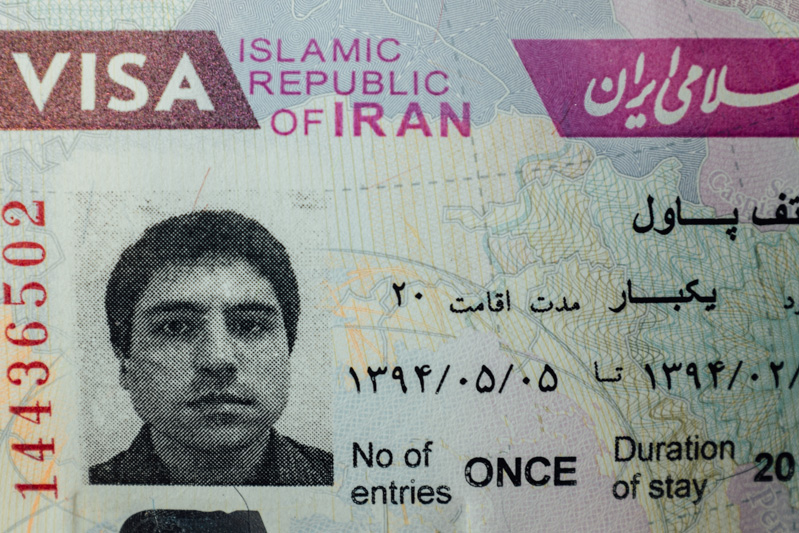
As with any country, the visa requirements for entry into Iran differ depending on the passport that you hold. If you are from Australia, New Zealand, Germany, The Netherlands, France, or Japan, things are really easy – you can either apply for a 20 day tourist visa from the Iranian embassy in your country or you can get a visa on arrival. That’s right, Aussies and Kiwis can rock up to any airport in Iran without a visa and get one then and there.
If you are a citizen of the United States, Canada, or the United Kingdom, the visa on arrival option isn’t available to you. The only way you’ll be able to get a tourist visa is by taking part in an “official” tour of Iran. I could go into more detail on the specifics of visa requirements for visiting Iran but there’s no need as my friend and fellow travel writer Nate has covered this in a rather extensive article over on Yomadic, which you can read here.
If you find that you’re having too much of a good time in Iran and that you’d like to spend more time in the country, you can easily get your tourist visa extended at an immigration office in one of Iran’s major cities. By all accounts the immigration office in Shiraz is one of the best for this.
Also a word of advice to Australians, the Iranian embassy in Canberra do not like to answer their phones or respond to e-mails. Just make sure that you fill in the paperwork correctly and you’ll be fine. When we received our visas the embassy actually spelled Lauren’s surname incorrectly. We tried to contact the Iranian embassy several times (87 times in fact) but this was to no avail. In any case, we arrived in Iran and the mistake on the visa was a non-issue – Lauren got into Iran no with problems.
Money
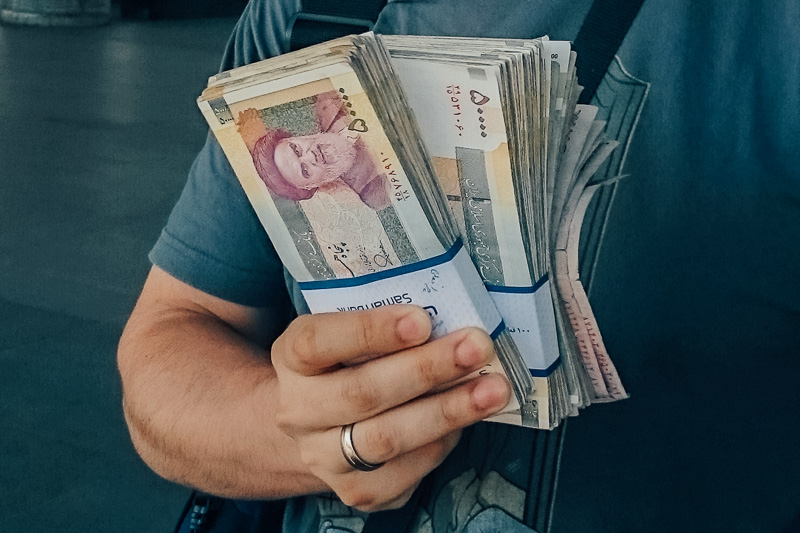
The currency used in Iran is the Iranian Rial. It’s a currency whose exchange rate can vary wildly and what I write today could be completely inaccurate in a few weeks time. When we travelled in May 2015, the official exchange rate was USD$ 1 -> IRR 29,234. The thing is, you never pay attention to the real exchange rate. Most currency exchanges we visited, including one at Tehran’s Imam Khomeini International Airport, were offering a rate closer to USD$1 -> IRR 33,000, which was significantly better than the “official” rate.
There are 2 places where you can get your money changed in Iran. The first are currency exchanges just like any other country while the second are black market currency dealers – you’ll see these guys on the sidewalk with briefcases full of cash open and a hive of activity around them. They aren’t dodgy as such but they aren’t technically official either. Our advice is to shop around and get a rate that you feel comfortable with. You’ll get an idea very early on as to what a “good” rate is and you should use this as a ballpark guide for the rest of your trip.
On the topic of currency, things can get confusing because of the exchange rate (it takes a while to get used to the fact that USD$35 makes you a millionaire) and because there are 2 measures of money used. Although there is only one kind of note, the Rial, prices are sometimes expressed in Rial and other times in Toman. 10 Rial = 1 Toman. This does cause some confusion – the best we can say is to use your judgment. If a price seems too good to be true, that’s probably because it is. When in doubt, the safe bet is to assume that the price is listed in Rial – if you hand over what you think you’re meant to be paying in Rial you’ll soon be corrected, and at that time you can choose whether or not you want to continue with the transaction.
There are banks, automatic teller machines, and credit card facilities everywhere in Iran but unfortunately these can’t be accessed by foreigners due to US sanctions. As a foreigner you’ll need to bring cash, and the best currency to bring with you is US Dollars or Euro. How much cash do you need? Well as a guide, not including accommodation, you shouldn’t need to budget any more than USD $35 per person, per day at the aforementioned exchange rate. That’s right, Iran is a very cheap country to visit. We didn’t hold back on what we spent while there for 2 weeks and we returned home with more than half of the money that we’d brought over.
Dress Code
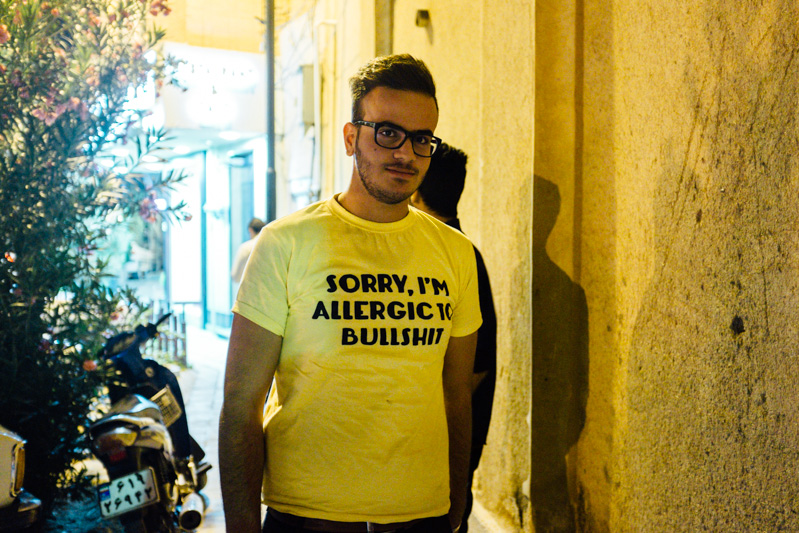
Most of the information that you find on the Internet about the dress code in Iran is quite vague, and often incorrect. The reason for this is that the rules keep on changing. Currently, things are better than they have been in the past. For men, the dress code is simple – jeans or trousers and any kind of top. I was in jeans and either a t-shirt or collared shirt for the entire trip. The main thing that’s important for men is that the legs are covered – no shorts guys. Footwear can be whatever you like – open shoes such as sandals are perfectly acceptable.
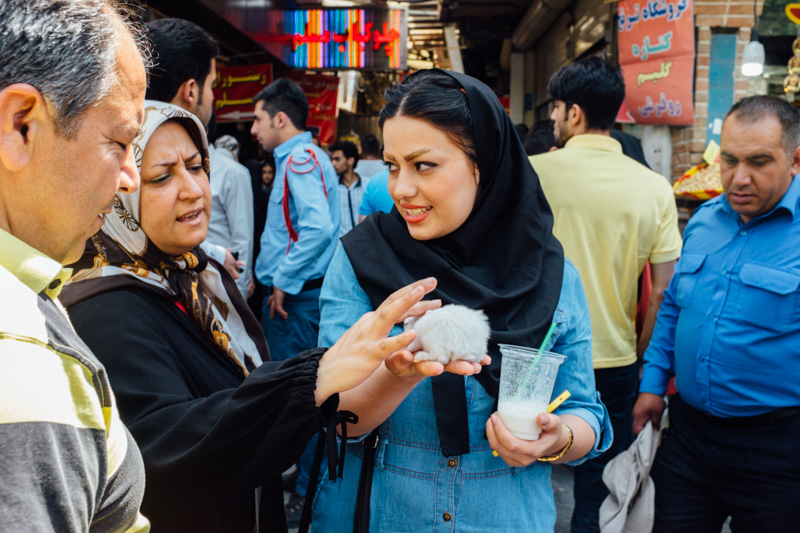
For women, things get a bit more complicated. As a general rule, relatively loose fitting tops that cover your arms and come down to your mid thigh or knees is what’s required. Trousers are essential. Your hair must be covered with a headscarf, however your face is allowed to be fully exposed – the burka is not commonly seen in Iran, and it’s usually a headscarf or hijab that you see, along with the chador in more conservative areas.
In the big cities like Tehran, Shiraz and Isfahan, you see women pushing the limits of what’s allowed in the country. Don’t be fooled by what the western media tells you – Iranian women are strong willed and independent and like to push boundaries. You’ll see women wearing the mantou – a sort of fitted coat, bright shoes and head scarves that only cover the back half of the head. Look around to see what the local women are wearing and dress accordingly. We’d read a lot about the “fashion police” in Iran, who patrol the streets looking to scold women who don’t dress conservatively enough however during our 15 days in the country, we only encountered these police on one occasion. In a very conservative rural town in the middle of dessert we were waiting outside of a mosque and the women in our group were instructed that they needed to pull up their head scarves so that all of their hair was covered. Just like any other country in the world, things get more conservative as you leave the bigger cities.
Internet
There’s no argument here – the Internet in Iran is pretty terrible. In the major cities things aren’t too bad when they are working, and sometimes you can get a connection that’s about the same speed as an ADSL1 connection. Unfortunately, these connections aren’t stable and you can expect dropouts several times during your browsing session. Outside of the major cities things get even worse and you’ll be longing for the day when you can get a full 10 minutes on the Internet at a decent speed which can happen, but is a rare occurrence.
The poor Internet in Iran is exasperated when you use a VPN. There are several sites that are banned in Iran, the most obvious for Westerners being Twitter and Facebook (Instagram is allowed). If you want to access these services while in the country you’ll need a VPN. It’s no secret that Iranians do access these services and it’s not unusual for locals to give you their Facebook details so you can connect with them. It’s one of those situations where the government officially bans the services but turns a blind eye to the fact that they are being used. I won’t give advice on which specific VPNs you can use for obvious reasons however when you get to Iran finding out this information will not be an issue – just be prepared for the fact that things will be slow.
Alcohol

The rule when it comes to alcohol in Iran is simple. It’s illegal, it’s banned, don’t think about it. Officially recognised non-Muslim minorities are allowed to produce alcoholic beverages for their own consumption and for religious rites (for example Armenians and Assyrians) and interestingly statistics show that alcohol consumption in Iran is the third highest in Middle Eastern, Muslim dominated countries behind Turkey and Lebanon. Make of this what you will but our advise is to neither drink nor seek out drink- it’s really not worth the risk.
What you will see in every drinks fridge in cafes and restaurants across the country are non-alcoholic malt beverages. Popular brands include Istak, Delstar, Hey Day and Shams. The original flavours are pretty bad tasting however the fruit flavoured options, such as lemon, peach and tropical are actually quite tasty, although they have more in common with soda rather than beer. The bottles/cans and labels certainly look like beer, but beer this is not.
Safety
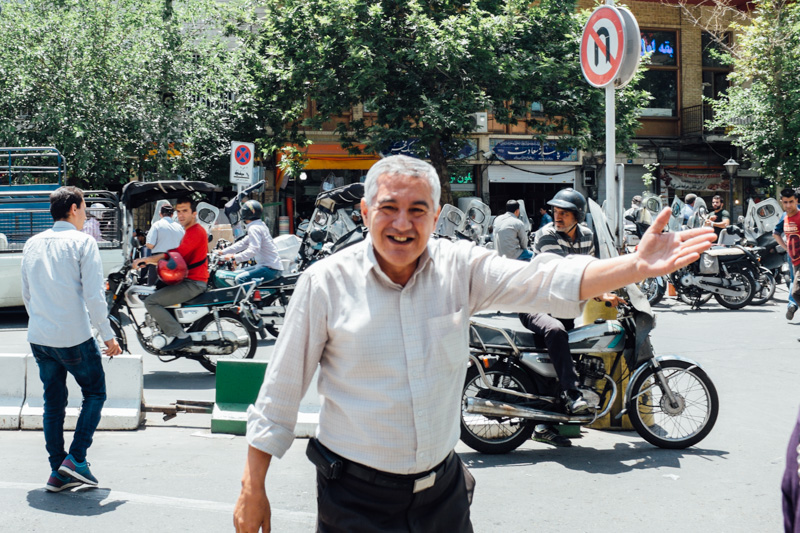
Despite what the mainstream Western media tells you, Iran is not a dangerous place full of terrorists who want to kill you. The famous 12th century Sufi poet Sanai once said “Know him as a gift from thy lord, when a guest suddenly shows at your door”, and this attitude permeates the Iranian mindset. Iranians are friendly, really friendly, as in the friendliest people we’ve met on our extensive travels. They want to know about you, why you decided to visit Iran, what you think of the country and how you’re doing. They are genuinely nice people and love to chat to visitors about anything and everything. Tourists are rare in Iran for a variety of reasons and when Iranians see a visitor, they want to make sure that that visitor feels welcome.
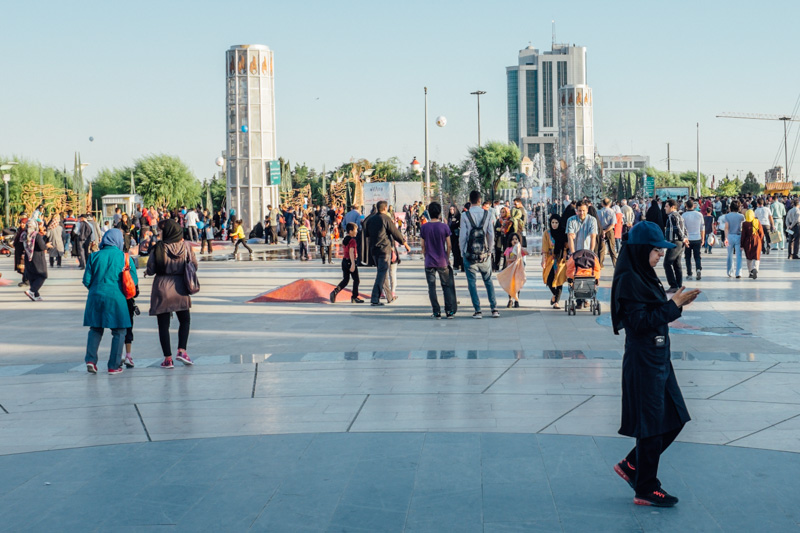
Walking through the streets of Iran’s cities, we were surprised at just how safe we felt. Money changers sit on the sidewalks, openly displaying cases and boxes full of cash, there are people everywhere going about their lives and it’s not uncommon to see families out enjoying themselves and picnicking (a favourite pass time of Iranians) late into the night, every night. We felt safer in Iran than we have in most other countries that we’ve visited.
Iranians will offer you gifts out of the goodness of their hearts and expect nothing in return however you might be surprised at the extent and value of the gift that they offer you, which leads to the next point…
Taarof
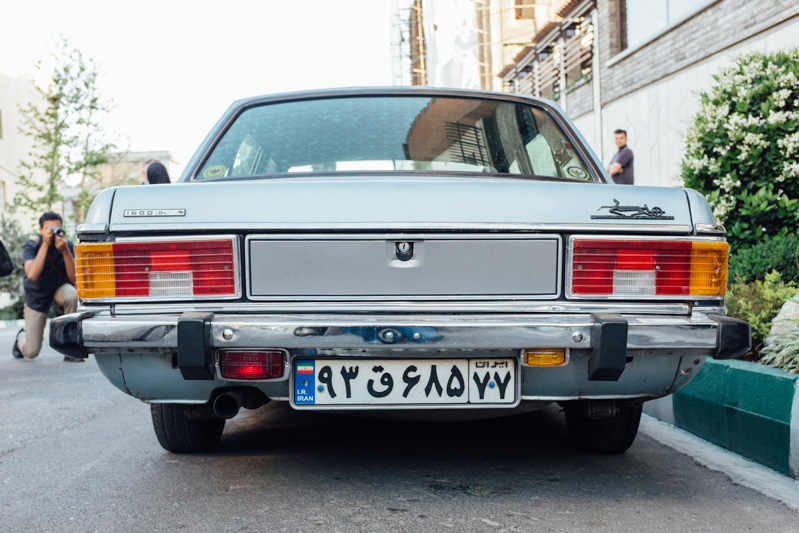
Taarof is a Persian form of civility that encompasses a variety of social behaviours. Where visitors will encounter taarof is when at the shops or talking with a local about an object that they admire. Essentially a person (offeree) is obliged to offer anything another might want, and the person receiving the offer (offeror) is equally obliged to refuse it. This goes back and forth several times (generally 3) before the offeror and offeree finally determine whether the offer and refusal were real or simply polite. It’s confusing and you kind of just have to roll with it.
We encountered taarof several times during our stay in Iran but one example really illustrates it nicely. On our first day in Tehran we were waiting outside of our hotel when we spotted a really nice vintage car. One of our friends was admiring the car when a hotel employee walked out and indicated to us that it was his car. He asked our friend if he wanted to sit inside the car and take a look, which he did. When it was obvious that our friend really liked the car, the employee offered him the car. He handed over the keys and said “take it, it’s yours”. In this situation, taarof was clearly at play.
The “Religious Thing”
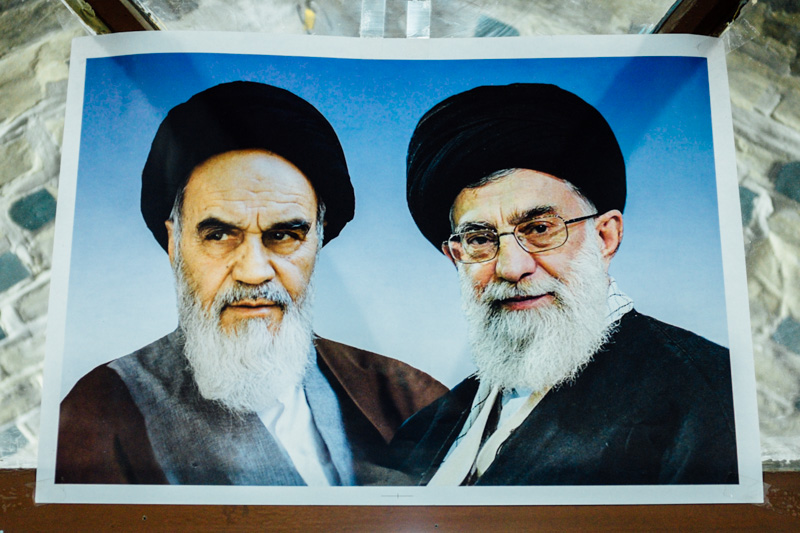
Iran might be an Islamic republic but one thing that was surprising even to us is that it didn’t feel like an overly religious place. Sure there’s the strict dress code, the ban on alcohol and photos of the 2 Ayatollahs all over the place but when it comes down to people actually living their lives, everything seems quite normal. Iranians follow the rules that are set down of course, but walking down the street you don’t feel like anything is being shoved in your face and beyond the obvious things, it’s all very subtle and the street scenes that you see could be that of any other place in the world.
Quite simply, in the major cities in particular, Iran just doesn’t feel super religious. It’s clear that the majority of Iranians live with the restrictions placed on them because they have to, not because they want to. Yes it’s simplifying the matter but as a visitor to Iran, you’ll be surprised.
Persians Aren’t Arabs
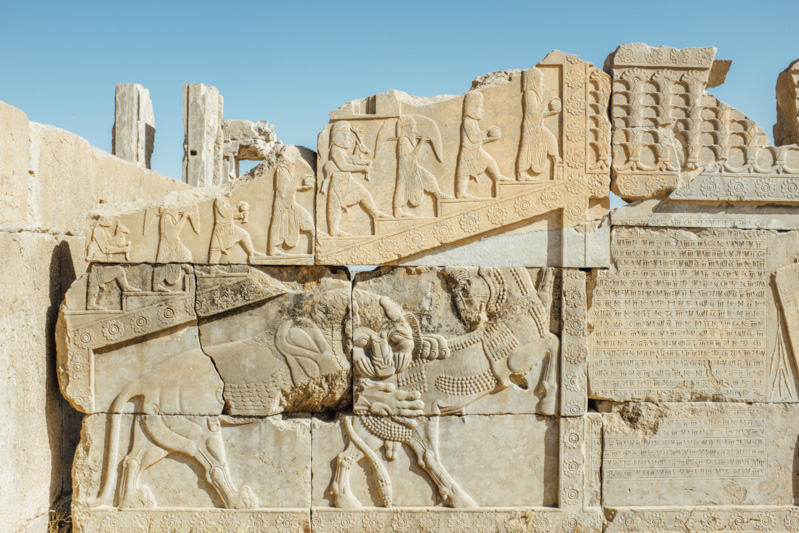
Persians have a long and proud culture, which dates back thousands of years. Persians are proud of their culture and who they are and its important to note that Persian culture is distinct from Arab culture. On several occasions we were told that one of the biggest insults that you can throw at a Persian is to call them an Arab. It’s the misrepresentation of Persian culture that is offensive – for example Iranians were highly offended by the false depiction of ancient Persians as barbarians in the movie 300, as ancient Persian was in fact a highly civilised and advanced culture.
Numbers & Letters

Although you see European numbers in some places, by far the most common numeral system used in Iran is the Hindu-Arabic numeral system. Knowing the symbols for numbers 0-9 is essential. Thankfully they are really easy to learn.
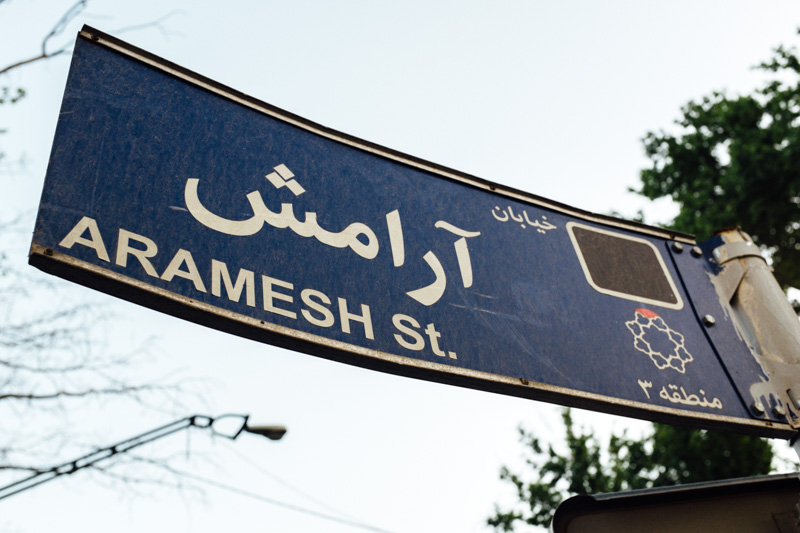
Shops often only use Farsi in their signs, which can make pinpointing a specific place difficult however navigation is made easier by the fact that most street signs are bilingual, and contain street names that use both Farsi and Roman letters. This gives visitors a shot at being able to read maps and find their way around. When it comes to menus at restaurants and cafes, you’ve got about a 50/50 chance of getting an English menu. Thankfully, the super friendly Iranians will do all they can to make sure you can order something that you want.
Keep these 10 tips in mind when you travel to Iran and they will set you in good stead when you arrive. If you’ve been to Iran and have any tips you’d like to share, please let us know in the comments section below – I’m sure our readers would love to know.

